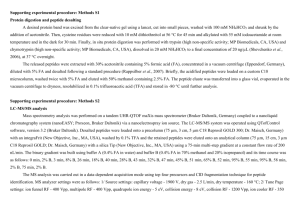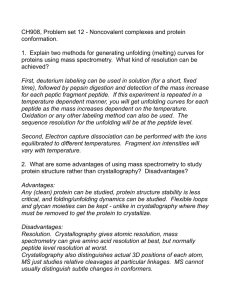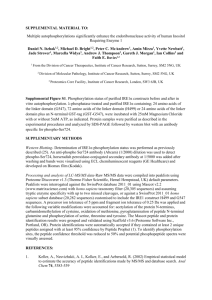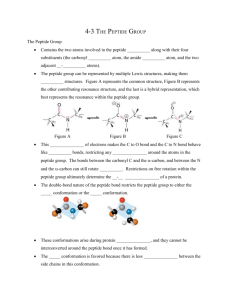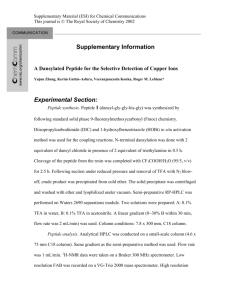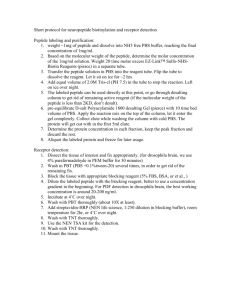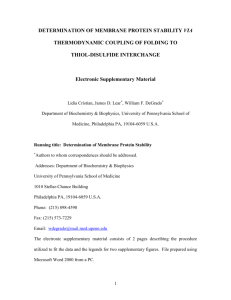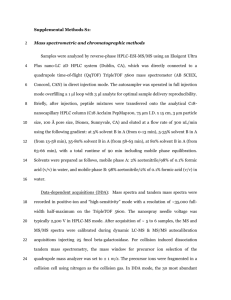Online Resources for *Biological Tissue Imaging with a Position and
advertisement
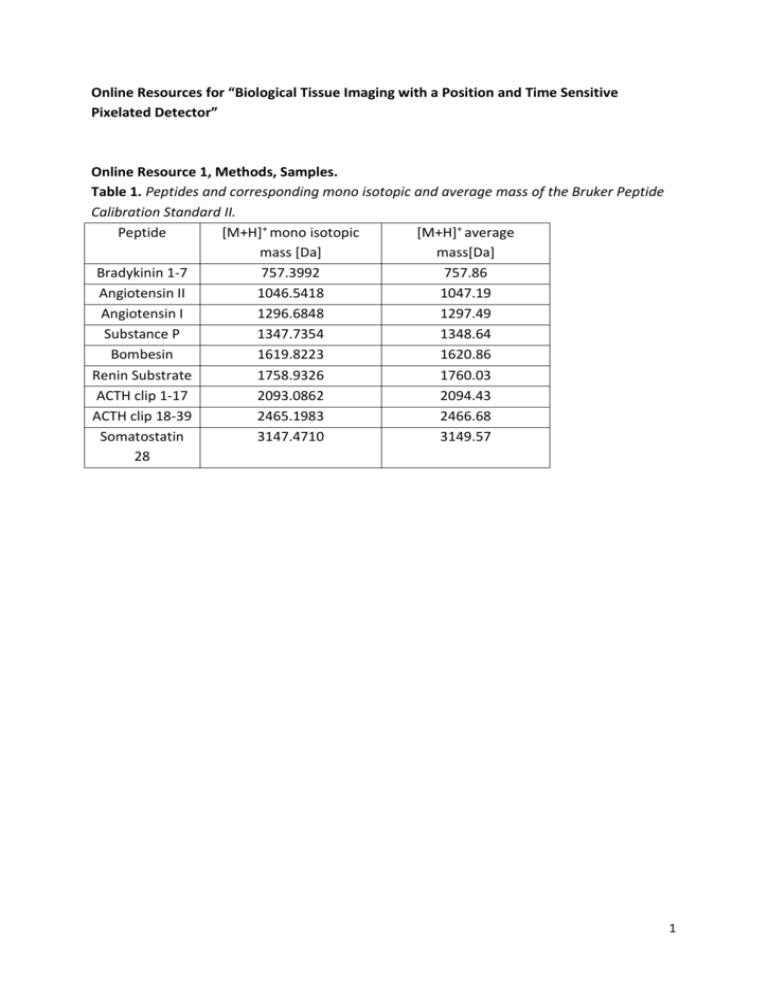
Online Resources for “Biological Tissue Imaging with a Position and Time Sensitive Pixelated Detector” Online Resource 1, Methods, Samples. Table 1. Peptides and corresponding mono isotopic and average mass of the Bruker Peptide Calibration Standard II. Peptide [M+H]+ mono isotopic [M+H]+ average mass [Da] mass[Da] Bradykinin 1-7 757.3992 757.86 Angiotensin II 1046.5418 1047.19 Angiotensin I 1296.6848 1297.49 Substance P 1347.7354 1348.64 Bombesin 1619.8223 1620.86 Renin Substrate 1758.9326 1760.03 ACTH clip 1-17 2093.0862 2094.43 ACTH clip 18-39 2465.1983 2466.68 Somatostatin 3147.4710 3149.57 28 1 Online Resource 2, Methods, Sample Preparation. Figure S1: Optical scan (Mirax Virtual Slide Scanner, Carl Zeiss AG, Oberkochen, Germany) of the mouse testis tissue section after one single cycle of matrix application with the homebuilt pneumatic sprayer. The DHB matrix crystals have a size of about ~5 µm on tissue. Figure S2: Optical scan (Mirax Virtual Slide Scanner, Carl Zeiss AG, Oberkochen, Germany) of DHB matrix crystals from one single cycle of matrix application with the Bruker ImagePrep. The ImagePrep enables fast, large area matrix coverage at matrix solution droplet sizes of ~ 50-80 µm on average. 2 Online Resource 3, Results. The peptide standard spectrum of this experiment contains the expected peptide peaks in the mass range 500 < m/z < 3500. The spectral quality is in accordance with the time resolution of the Timepix detections system and has been investigated and discussed in detail elsewhere [1]. Figure S4: Mass spectrum of the peptide standard in the mass range from 500 – 3500 Da. 3 Online Resource 4, Results. Figure S4 displays a MSI image of a peptide standard-TEM grid sample (described in “Samples.”) measured with a SYNAPT G1 HDMS (Waters Corporation, Milford, USA). This image is acquired in microprobe mode to allow comparison with the microscope mode images acquired with the Timepix (Figure 1 in the article). The field of view is 2.4 × 2.4 mm2. Individual pixels have a dimension of 150 × 150 µm2. A comparison between Figure S4 and Figure 1a indicates that the resolving power of the microscope mode image acquired with the Timepix is significantly higher than the microprobe mode images from the SYNAPT G1. Figure S4: Microprobe mode image of a peptide standard-TEM grid sample acquired with a MALDISYNAPT G1 HDMS (Waters Corporation, Milford, USA). 4 References to the Online Resources 1. Jungmann JH, MacAleese L, Visser J, Vrakking MJJ, Heeren RMA (2011) High dynamic range biomolecular ion microscopy with the timepix detector. Analytical Chemistry 83 (20):7888-7894. doi:10.1021/ac2017629 5

